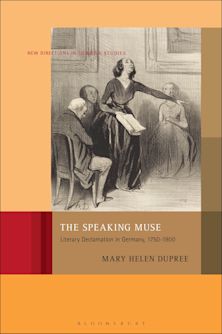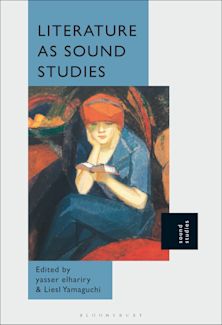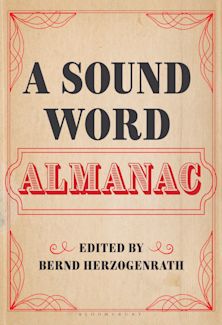- Home
- ACADEMIC
- Music & Sound Studies
- Sound Studies
- Lipsynching
You must sign in to add this item to your wishlist. Please sign in or create an account
Description
What does it mean when a singing voice is detached from an originating body through recording? And how does this affect consumers of recorded song? This book examines the practice of lipsynching to pre-recorded song in both professional and vernacular contexts, covering over a century of diverse artistic practices from early cinema through to the current popularity of self-produced internet lipsynching videos. It examines the ways in which we listen to, respond to, and use recorded music, not only as a commodity to be consumed but as a culturally-sophisticated and complex means of identification, a site of projection, introjection, and habitation, and, through this, a means of personal and collective creativity.
Table of Contents
Acknowledgments
Introduction
1. Locating the Disembodied Voice
2. Lipsynching to Conceal
3. Lipsynching to Express
4. Lipsynching to Start Your Day: The Soundtracked Life
Final Reflections and Participant Observation: Or, I Was a Middle-aged Lipsynching Star
Notes
Bibliography
Index
Product details

| Published | 09 Jan 2020 |
|---|---|
| Format | Ebook (Epub & Mobi) |
| Edition | 1st |
| Extent | 200 |
| ISBN | 9781501352362 |
| Imprint | Bloomsbury Academic |
| Series | The Study of Sound |
| Publisher | Bloomsbury Publishing |
About the contributors
Reviews
-
Engages with the phenomenon from a variety of different perspectives ... Snell covers interesting historical and technical material.
The Wire
-
This book is a gripping and wide-ranging study of the issues that arise when a voice inhabits another body and, by doing so, creates a new audio-visual collage. Its insights will come as a revelation to anyone who thinks lipsynching is simply a matter of ensuring that your lips move at the same time as the recorded voice.
Derek B. Scott, Professor of Critical Musicology, University of Leeds, UK, and editor of The Ashgate Research Companion to Popular Musicology (2009)
-
Spanning from the Kinetograph to viral videos, this is a rich study that situates lipsynching – as a creative, 'readerly' form of listening – in a long history of audio-visual media, culminating in what Snell calls a 'soundtracked life'. It will be a valuable book for sound and media scholars, and for anyone interested in how notions of the cinematic extend into today's vernacular musical practices.
Carlo Cenciarelli, Lecturer in Music, Cardiff University, UK, and editor of The Oxford Handbook of Cinematic Listening (forthcoming)

ONLINE RESOURCES
Bloomsbury Collections
This book is available on Bloomsbury Collections where your library has access.

































